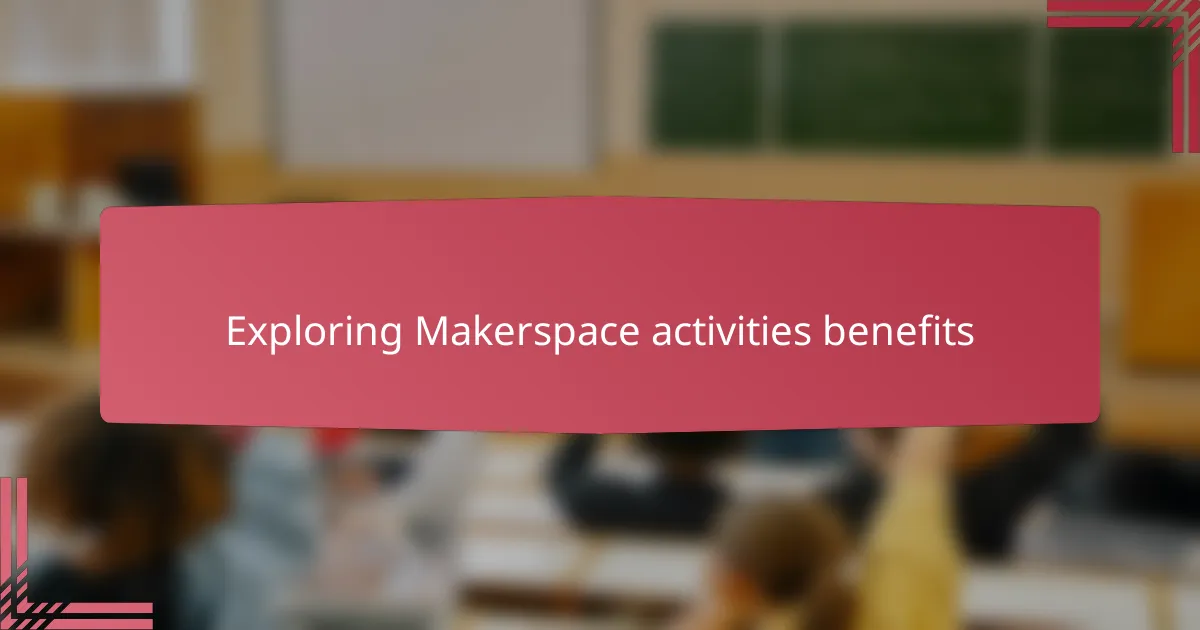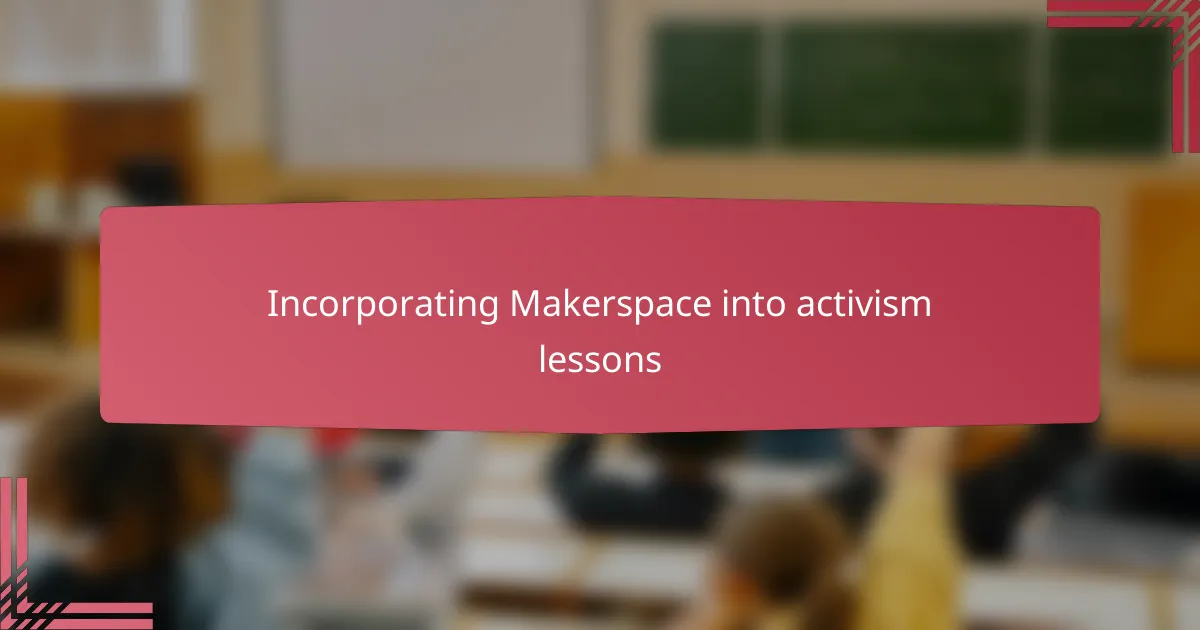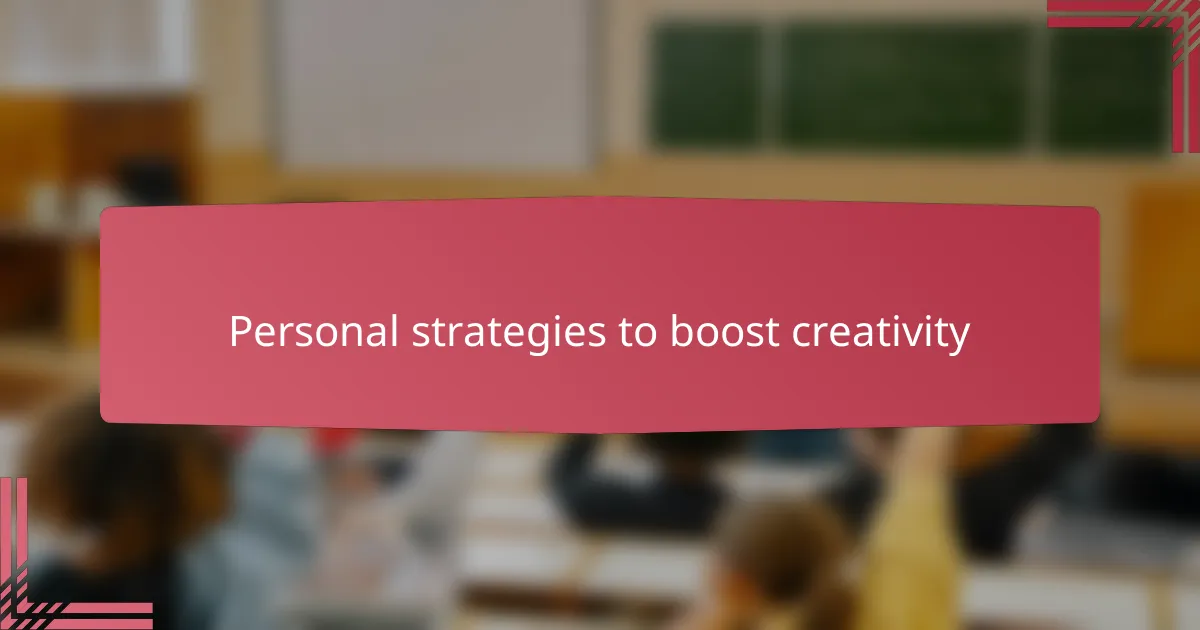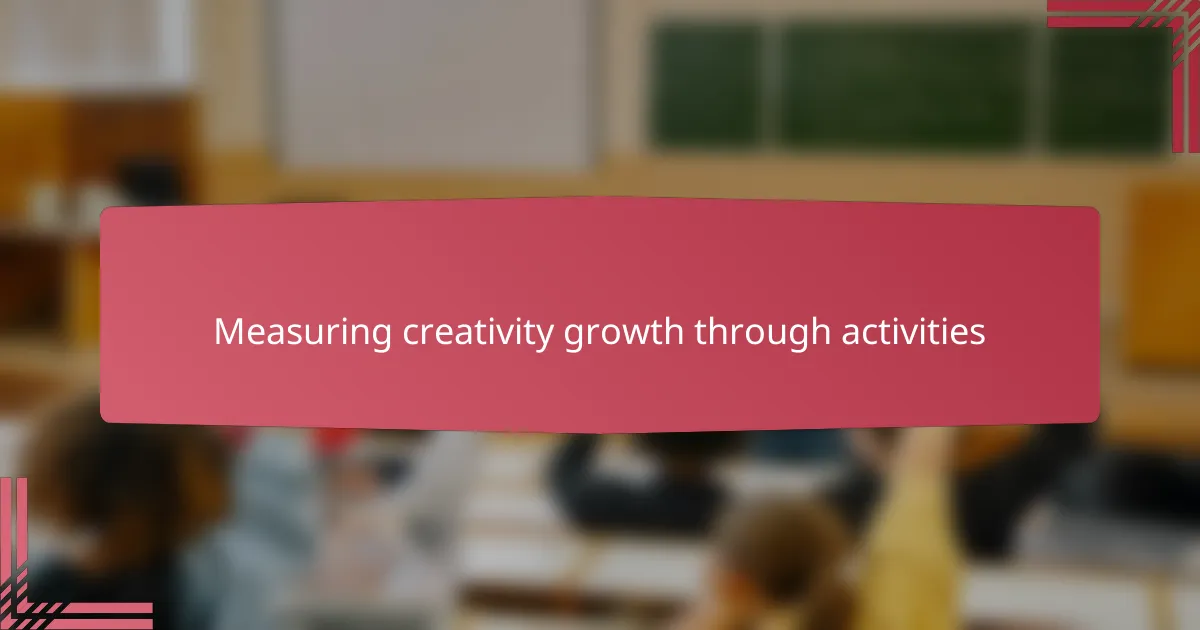Key takeaways
- Activist teacher resources empower educators to inspire critical thinking and engage students in real-world issues, fostering a deeper understanding of social justice.
- Makerspace activities enhance creativity, collaboration, and resilience, allowing students to experiment freely and embrace failure as a part of the learning process.
- Creating an effective Makerspace involves intentional arrangement of space and diverse materials to encourage exploration and innovation among students.
- Measuring creativity growth can be done through observing problem-solving approaches, incorporating self-reflection prompts, and evaluating collaboration and risk-taking in projects.

Understanding activist teacher resources
Activist teacher resources are more than just lesson plans or activities; they are tools for change. From my experience, these resources empower educators to challenge the status quo and inspire critical thinking in students. Have you ever wondered how a simple resource can spark a deeper conversation about justice or equity in your classroom?
What strikes me most is how these materials often connect teaching to real-world issues. I remember using a resource focused on environmental activism—it transformed a routine science project into a passionate inquiry about local pollution. That kind of engagement is hard to forget and makes teaching feel truly impactful.
Ultimately, activist teacher resources invite us to reflect on our own values as educators. They push us to ask tough questions: What stories am I amplifying? Whose voices am I missing? This ongoing reflection has helped me grow both personally and professionally in ways I never anticipated.

Exploring Makerspace activities benefits
Exploring Makerspace activities benefits, I found they spark creativity by giving students hands-on freedom to experiment and solve problems in real time. Have you noticed how a simple blank canvas or a pile of materials can suddenly ignite a flood of ideas? That moment when curiosity turns into creation is pure magic.
In my experience, Makerspaces break down the fear of failure. When learners tinker, tweak, or even scrap a project, they build resilience and confidence instead of worrying about perfection. It’s rewarding to see how this mindset shift helps students approach challenges with excitement rather than hesitation.
What’s more, Makerspace activities foster collaboration in ways traditional lessons sometimes miss. Watching students brainstorm together, share tools, and learn from each other reminded me how creativity often thrives in community—something I hadn’t fully grasped before. This sense of shared discovery makes every session vibrant and memorable.

Setting up a creative Makerspace environment
Creating a Makerspace environment starts with intentional choices about space and materials. I found that dedicating a bright, open area with accessible shelves invites students to explore without hesitation. Have you ever noticed how just having tools within reach can inspire that “let’s try this” attitude?
It’s not just about what’s in the room, but how it’s arranged. I remember rearranging furniture to create flexible work zones and suddenly, the room felt more inviting and less like a traditional classroom. That shift encouraged students to move freely, collaborate naturally, and dive into projects with enthusiasm.
Choosing diverse, tactile materials also made a big difference. From recycled objects to simple craft supplies, I learned that variety fuels curiosity. When faced with unfamiliar tools or textures, students often surprise me with creative solutions I hadn’t imagined either. Isn’t that the heart of creativity—discovering the unexpected together?

Incorporating Makerspace into activism lessons
Bringing Makerspace activities into activism lessons transformed how my students engage with social issues. Instead of just talking about change, they started building models, posters, and multimedia projects that expressed their ideas in powerful, tangible ways. Have you ever seen a student’s eyes light up when their hands bring their passion to life? That moment convinced me this is more than just art; it’s activism in action.
One time, we tackled community water conservation by creating low-cost filtration prototypes, and the creativity that flowed was inspiring. What struck me was how students didn’t just learn facts—they owned the problem and crafted solutions, often collaborating and debating fiercely. Makerspace gave them a safe space to fail, iterate, and ultimately, to believe their voices mattered beyond words.
I’ve realized incorporating Makerspace requires intentional framing, too. Asking questions like, “How can your creation challenge an injustice?” steers creativity towards purpose. It turns freeform making into focused activism, where every material and idea pushes towards justice and equity. Isn’t that the kind of learning we want—deep, meaningful, and hands-on?

Personal strategies to boost creativity
Finding time for quiet reflection is one of my go-to strategies to boost creativity. When I step back from the noise and give myself space to think without pressure, fresh ideas often emerge unexpectedly. Have you ever noticed how your best thoughts come when you’re not trying too hard?
I also make it a point to play with different materials or tools, even when I don’t have a specific project in mind. This playful experimentation invites a kind of curiosity that sparks new connections in my mind. It’s like waking up a dormant part of my brain that’s hungry to explore and invent.
Lastly, I’ve learned that embracing mistakes is vital. Instead of fearing failure, I treat it as a helpful guide toward innovation. When something doesn’t work, it pushes me to ask, “What if I try it this way?” That shift in mindset turns setbacks into stepping stones for creative breakthroughs.

Examples of creative Makerspace projects
One project that really stuck with me was when students designed their own protest signs using a mix of recycled materials and digital art tools. Watching their ideas take shape—from rough sketches to bold, colorful statements—reminded me how Makerspaces give form to their passion for justice. Have you ever seen a classroom suddenly buzz with energy as learners channel their voices through creative expression? That’s what happened here, and it was electrifying.
Another memorable project was building simple circuit boards to create illuminated messages about climate action. At first, some students hesitated, worried they weren’t “tech-savvy” enough. But as they connected wires and saw their designs light up, their confidence soared. It showed me how hands-on tinkering can transform technical skills from barriers into empowerment, fueling creativity in unexpected ways.
I also loved when students collaborated on a mural combining painting, collage, and 3D elements to highlight stories of community resilience. The layers of texture and color weren’t just artistic choices—they reflected the complexity and strength of the people they were depicting. Seeing their teamwork and dedication unfold in that project convinced me Makerspace activities can turn abstract ideas into powerful, shared experiences. Isn’t that the essence of creative learning?

Measuring creativity growth through activities
Measuring creativity growth through activities can feel a bit intangible at first, but I found that observing how students approach problems is a revealing start. For instance, I noticed that over time, their solutions became less about finding a “right answer” and more about exploring multiple possibilities. Have you ever caught yourself marveling at how a student’s brainstorming session unfolds with more original ideas than before? That shift tells me their creative muscles are definitely getting stronger.
I also like to include self-reflection prompts after each Makerspace activity. Asking students questions like, “What was your favorite part of creating? Did you try something new or unexpected?” encourages them to recognize their own growth. From my experience, hearing their reflections often uncovers surprising insights about their evolving creative confidence. It’s these moments that make me realize growth isn’t always measurable by a rubric, but by a change in mindset.
Another practical way I gauge creativity is by tracking collaboration and risk-taking during projects. When students feel safe to experiment, share wild ideas, or even fail openly, it signals a deeper creative engagement. I remember one project where a group dared to scrap their initial plan halfway through and start fresh—watching them embrace that uncertainty with enthusiasm was a clear marker of growth. That kind of courage, I think, is one of the best signs that creativity is truly blossoming.